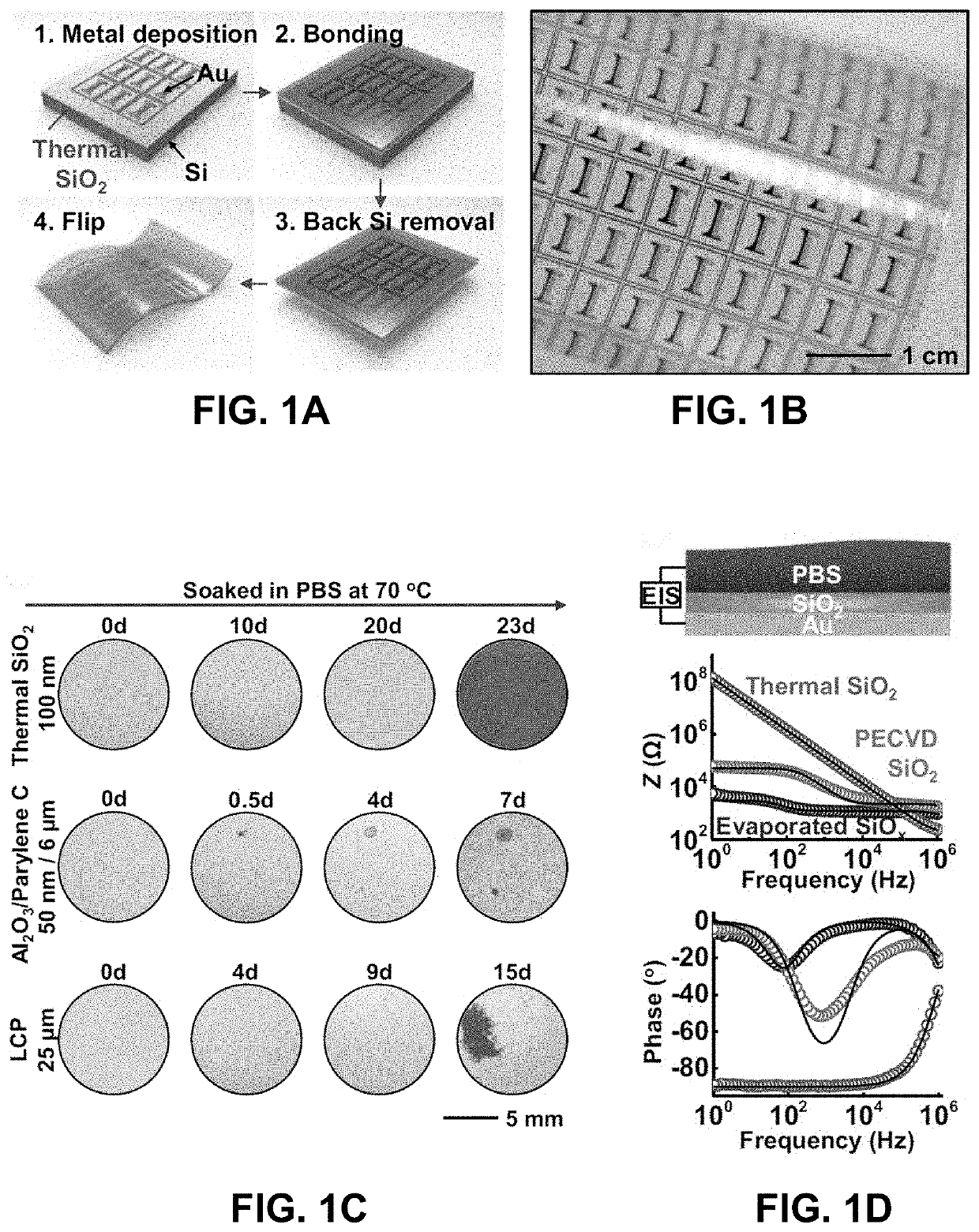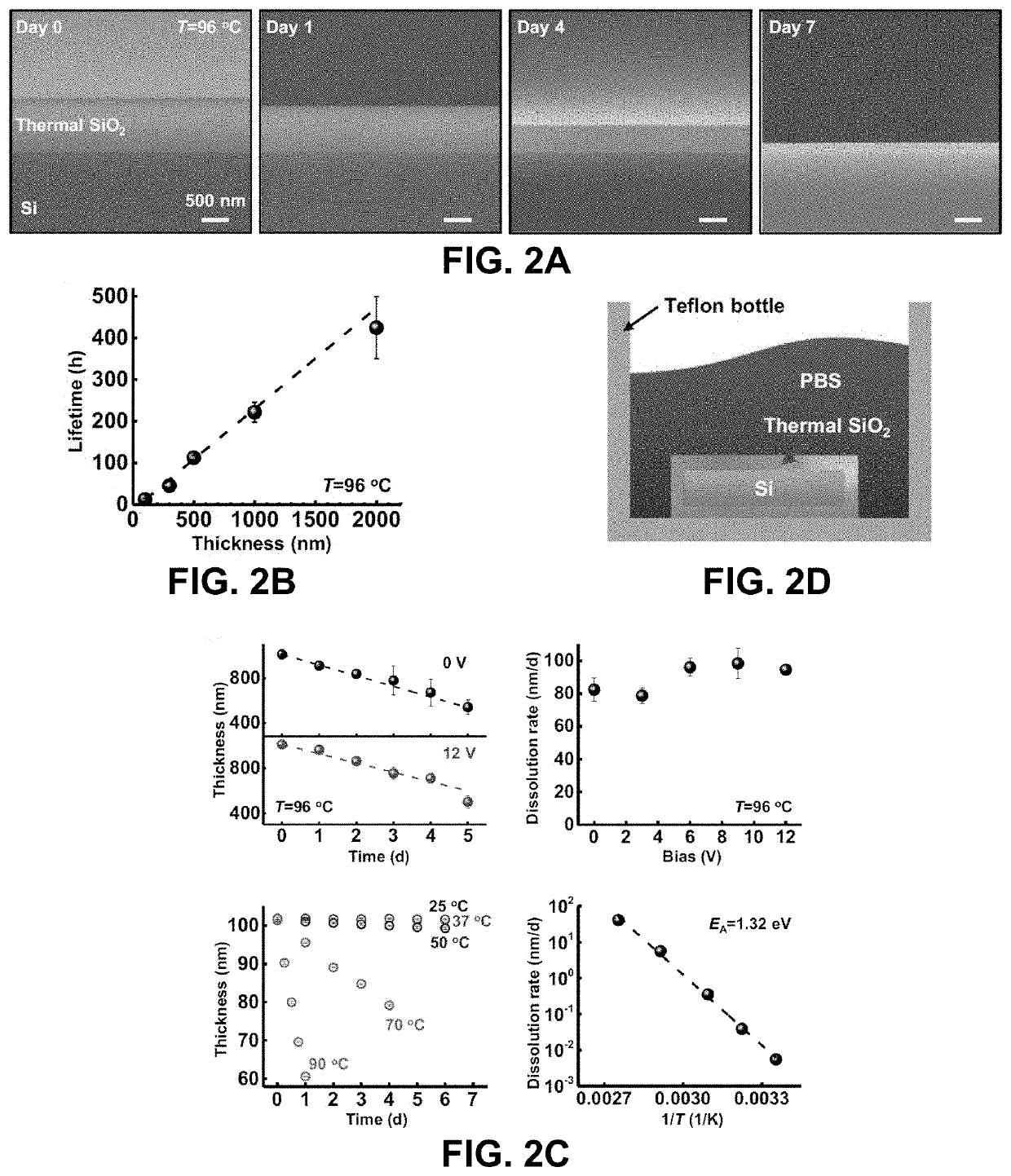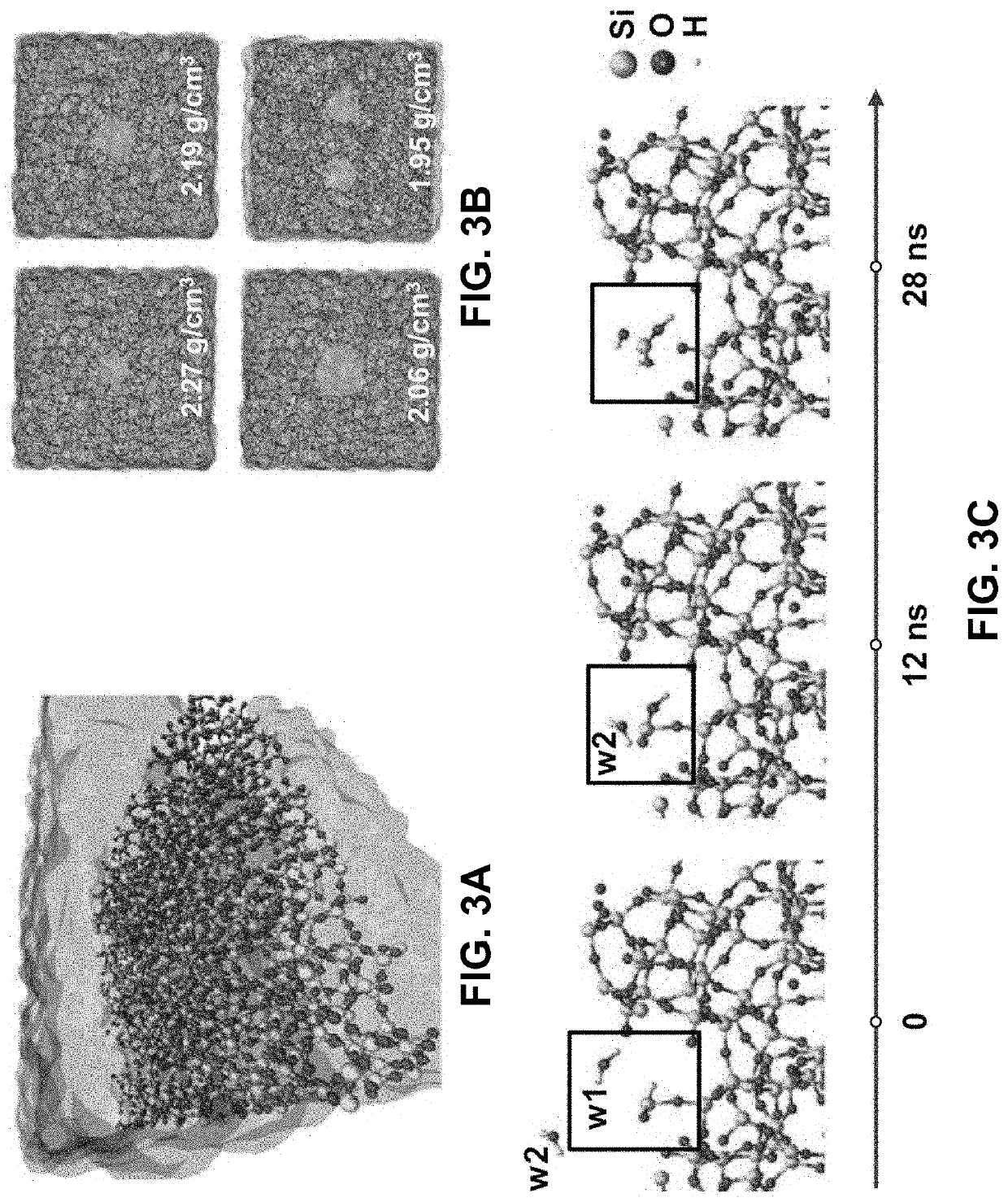Encapsulated flexible electronics for long-term implantation
a flexible electronics and long-term implantation technology, applied in the field of encapsulated flexible electronics for long-term implantation, can solve the problems of corresponding functional degradation, inability to reliably withstand electronic devices without damage, etc., and achieve the effect of beneficial long-term implantation characteristics
- Summary
- Abstract
- Description
- Claims
- Application Information
AI Technical Summary
Benefits of technology
Problems solved by technology
Method used
Image
Examples
example 1
, Transferred Layers of Thermally Grown Silicon Dioxide as Biofluid Barriers for Biointegrated Flexible Electronic Systems
[0119]Materials that can serve as long-lived barriers to biofluids are essential to the development of any type of chronic electronic implant. Devices such as cardiac pacemakers and cochlear implants use bulk metal or ceramic packages as hermetic enclosures for the electronics. Emerging classes of flexible, biointegrated electronic systems demand similar levels of isolation from biofluids but with thin, compliant films that can simultaneously serve as biointerfaces for sensing and / or actuation while in contact with the soft, curved, and moving surfaces of target organs. This example introduces a solution to this materials challenge that combines (i) ultrathin, pristine layers of silicon dioxide (SiO2) thermally grown on device-grade silicon wafers, and (ii) processing schemes that allow integration of these materials onto flexible electronic platforms. Accelerate...
example 1 references
[0139]1. Kim D-H, et al. (2011) Epidermal electronics. Science 333(6044):838-843.[0140]2. Lipomi D J, et al. (2011) Skin-like pressure and strain sensors based on transparent elastic films of carbon nanotubes. Nat Nanotechnol 6(12):788-792.[0141]3. Xu S, et al. (2014) Soft microfluidic assemblies of sensors, circuits, and radios for the skin. Science 344(6179):70-74.[0142]4. Gao W, et al. (2016) Fully integrated wearable sensor arrays for multiplexed in situ perspiration analysis. Nature 529(7587):509-514.[0143]5. Wu W, et al. (2014) Piezoelectricity of single-atomic-layer MoS2 for energy conversion and piezotronics. Nature 514(7523):470-474.[0144]6. McAlpine M C, Ahmad H, Wang D, Heath J R (2007) Highly ordered nanowire arrays on plastic substrates for ultrasensitive flexible chemical sensors. Nat Mater 6(5):379-384.[0145]7. Kaltenbrunner M, et al. (2013) An ultra-lightweight design for imperceptible plastic electronics. Nature 499(7459):458-463.[0146]8. Lochner C M, Khan Y, Pierre...
example 2
ely Coupled Arrays of Multiplexed Flexible Silicon Transistors for Long-Term Cardiac Electrophysiology
[0225]Advanced capabilities in electrical recording are essential for the treatment of heart-rhythm diseases. The most advanced technologies use flexible integrated electronics; however, the penetration of biological fluids into the underlying electronics and any ensuing electrochemical reactions pose significant safety risks. Here, we show that an ultrathin, leakage-free, biocompatible dielectric layer can completely seal an underlying array of flexible electronics while allowing for electrophysiological measurements through capacitive coupling between tissue and the electronics, without the need for direct metal contact. The resulting current-leakage levels and operational lifetimes are, respectively, four orders of magnitude smaller and between two and three orders of magnitude longer than those of other flexible-electronics technologies. Systematic electro physiological studies ...
PUM
 Login to View More
Login to View More Abstract
Description
Claims
Application Information
 Login to View More
Login to View More - R&D
- Intellectual Property
- Life Sciences
- Materials
- Tech Scout
- Unparalleled Data Quality
- Higher Quality Content
- 60% Fewer Hallucinations
Browse by: Latest US Patents, China's latest patents, Technical Efficacy Thesaurus, Application Domain, Technology Topic, Popular Technical Reports.
© 2025 PatSnap. All rights reserved.Legal|Privacy policy|Modern Slavery Act Transparency Statement|Sitemap|About US| Contact US: help@patsnap.com



